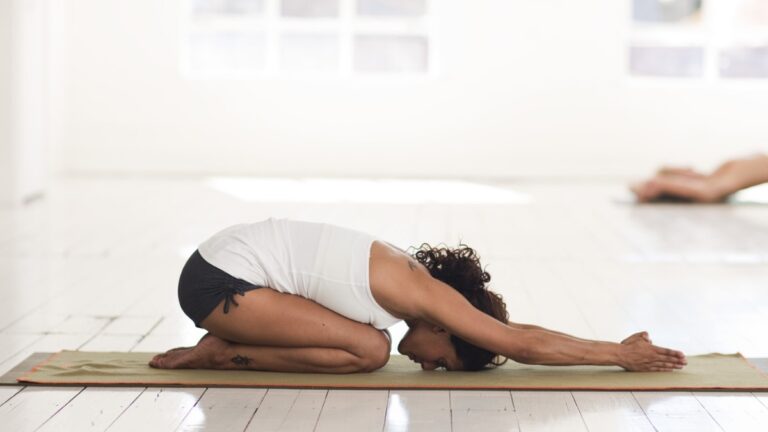How Much Hydrogen Peroxide In Ice Bath? Recovery Soaks!
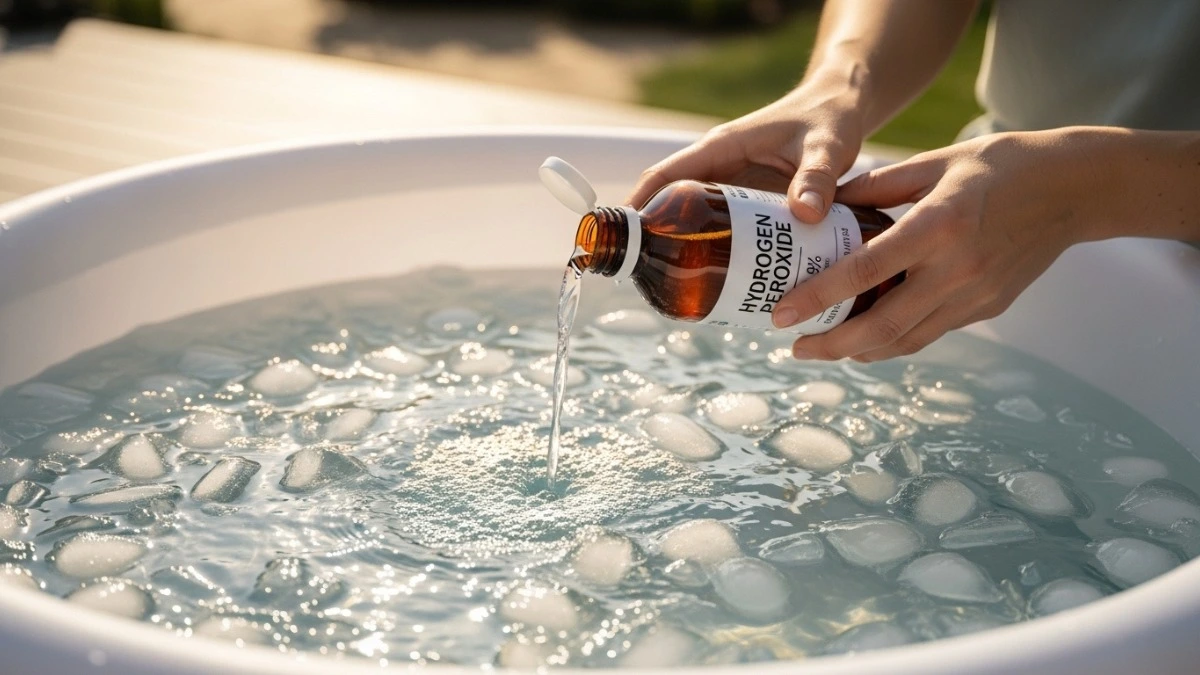
Last Updated on November 19, 2025
Cold therapy has become a trusted ritual in wellness and recovery, that moment when icy water meets tired muscles and your breath steadies into calm. But one question often surfaces during this mindful practice: how much hydrogen peroxide in ice bath is actually safe?
I’ve guided many clients who love their ice baths yet struggle to keep them clean between uses. The balance between cleanliness and safety matters. Add too little peroxide and bacteria thrive; add too much and skin irritation follows.
This guide explains the safe, simple ratio that keeps your ice bath fresh and your recovery routine aligned with holistic wellness principles—without harsh chemicals or guesswork.
Understanding The Role Of Hydrogen Peroxide In Ice Baths
A clean ice bath isn’t just about clear water, it’s about creating a safe recovery environment for your body. That’s where hydrogen peroxide plays a subtle yet important role.
This common household compound works as a natural disinfectant, breaking down into water and oxygen. It helps neutralize bacteria, odor, and organic debris that often accumulate in reused ice bath water.
Unlike bleach or chemical cleaners, hydrogen peroxide supports a more holistic approach to hygiene. It’s gentle on the skin when used correctly and environmentally friendly once diluted.
Why add it at all? Because repeated dips, especially after workouts, introduce sweat, oils, and dead skin cells into the tub. A small dose of peroxide maintains cleanliness and peace of mind, so your next recovery session feels fresh, not stale.
Hydrogen peroxide breaks down naturally, leaving no toxic residue, just cleaner water and a calmer recovery space.
How Much Hydrogen Peroxide In Ice Bath?
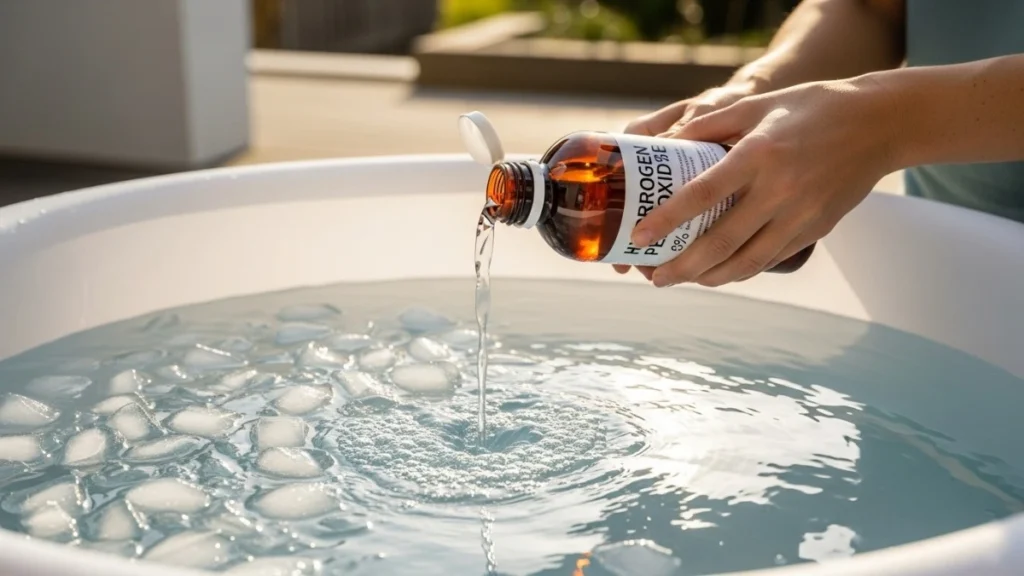
If you’ve been unsure about the right amount, this simple ratio is your answer.
For most home ice baths, add 1–2 cups of 3% hydrogen peroxide per 80–100 gallons of water. This concentration is mild enough to protect your skin but strong enough to keep your bath fresh and clean.
This dilution supports natural sanitation while preventing microbial buildup, especially if you reuse your tub over several days. Hydrogen peroxide doesn’t interfere with cold therapy benefits, it simply enhances the hygiene aspect.
If your bath is smaller (like a 40-gallon barrel), ½ to 1 cup works well. Always pour it in before adding ice to help it distribute evenly.
The goal isn’t to sterilize the water entirely, it’s to maintain clarity and freshness between fills.
The Science Behind Hydrogen Peroxide And Cold Therapy
Cold therapy helps muscles recover, reduces inflammation, and strengthens circulation. Hydrogen peroxide adds another layer, microbial safety.
Chemically, hydrogen peroxide (H₂O₂) acts as an oxidizer. It releases oxygen when it contacts organic matter, killing bacteria and neutralizing impurities. In ice-cold water, its reaction slows slightly, but the sanitation effect remains.
I often remind clients that hydrogen peroxide isn’t meant to “boost” recovery like a supplement; it’s there to preserve the purity of your soaking environment.
Some research, like studies from the Journal of Dermatological Science, notes that low concentrations of 3% hydrogen peroxide are generally safe for short-term skin contact when properly diluted.
That’s key, proper dilution. Stronger forms (6–30%) can irritate skin and are never recommended for baths.
Cold therapy combined with clean, oxygen-rich water creates a refreshingly balanced recovery ritual, one rooted in both science and self-care.
How To Add Hydrogen Peroxide To An Ice Bath Safely (Step-By-Step)
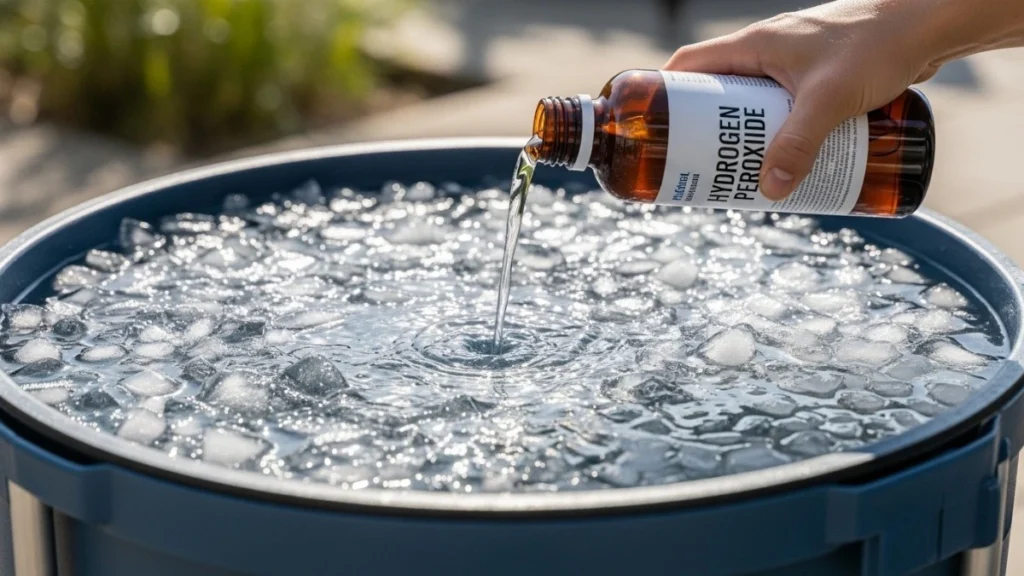
When it comes to using hydrogen peroxide safely, precision and mindfulness go hand in hand. Think of this as a simple ritual rather than a chore. Each step contributes to a cleaner, safer, and more effective recovery soak.
Step 1 – Start With a Clean Tub or Container
The foundation of a safe ice bath starts with the container itself. Wash it thoroughly with warm water and mild soap before every new setup. This prevents bacteria from clinging to the sides before you even fill it.
A quick rinse might seem enough, but grime often hides in corners or drain plugs. Clean tubs also make your hydrogen peroxide more effective since it won’t have to “fight” built-up residue.
A few minutes of prep ensures your recovery starts in a pure space — not one that harbors yesterday’s sweat and bacteria.
Step 2 – Measure Your Water Volume
Before adding anything, know your bath’s capacity. Most portable tubs and stock tanks hold 80–100 gallons, but smaller setups may hold only 40–60.
Getting the volume right matters because your hydrogen peroxide ratio depends on it. Using too much can dry the skin or irritate open pores. Too little won’t sanitize effectively.
If you’re unsure, look up your tub’s specs or measure manually. Precision here protects your skin and ensures each soak feels balanced, clean, and restorative.
Step 3 – Use 3% Hydrogen Peroxide Only
Not all peroxide is created equal. You might find bottles labeled 6%, 12%, or even 30%, those are industrial-strength and not safe for topical or bath use.
Stick to 3% hydrogen peroxide, the household-grade concentration typically used for first aid. It offers gentle disinfection without harsh effects.
This form maintains the right equilibrium, effective against bacteria yet kind to the skin barrier. Choosing the correct concentration means you can relax into your ice bath without worrying about irritation or chemical burns.
Step 4 – Measure and Add the Right Amount
This is where accuracy counts. For a standard 80–100 gallon bath, pour in 1–2 cups of 3% hydrogen peroxide before adding your ice.
If you use a smaller 40–50 gallon tub, cut the amount in half, around ½ to 1 cup. Stir the water gently with your hand or a wooden spoon to disperse it evenly.
Hydrogen peroxide mixes quickly, so you don’t need to wait long before adding ice. Maintaining this balance ensures effective sanitation and peace of mind each time you soak.
Step 5 – Add Ice and Maintain Temperature
Once your peroxide is mixed in, it’s time to add the ice. The ideal temperature for cold therapy falls between 50–59°F (10–15°C).
Hydrogen peroxide won’t change water temperature, its job is to support hygiene. Stirring the bath as you add ice helps distribute both cold and peroxide evenly.
Monitoring temperature ensures you get the muscle-recovery benefits of an ice bath without overexposure to extreme cold. Clean, cold, and balanced, that’s your goal.
Step 6 – Limit Soak Duration
Less is often more with cold therapy. Aim for 10–15 minutes per session, especially when hydrogen peroxide is present.
Longer soaks don’t provide extra recovery benefits and may leave skin dry or tight. If you have sensitive skin, start with 5–8 minutes and work your way up.
Hydrogen peroxide adds mild antiseptic power, but overexposure can cause irritation. Moderation keeps your body and skin in harmony, ensuring the experience stays soothing rather than harsh.
Step 7 – Post-Bath Rinse and Moisturize
After your soak, rinse with warm water to remove any trace of peroxide. This quick rinse helps rebalance your skin’s pH and removes leftover residue.
Follow with a hydrating lotion, coconut oil, or aloe-based moisturizer to lock in moisture and support skin recovery. Think of this as the aftercare that completes your cold therapy ritual.
Your body has just experienced an intense contrast of cold and oxygenation, giving it nourishment afterward deepens the healing effect.
Step 8 – Clean Your Ice Bath Regularly
Even with hydrogen peroxide, no tub stays fresh forever. Empty and rinse it after every 2–3 uses, or sooner if the water becomes cloudy.
Scrub gently with a mild detergent or baking soda paste, then rinse and let it air-dry before refilling. For deeper sanitation, add a cup of peroxide to the rinse water once a week.
Routine cleaning not only prevents bacteria buildup but also keeps your tub from developing unpleasant odors or film. Clean tools support clean recovery.
Step 9 – Optional Additions for Natural Hygiene
Want to enhance water freshness naturally? Combine peroxide with gentle additives like Epsom salt or baking soda.
- Add 1–2 cups of Epsom salt for muscle relaxation and water clarity.
- Add ½ cup of baking soda to neutralize odors.
Avoid mixing hydrogen peroxide with essential oils or vinegar, as these can alter its chemical balance and reduce its effectiveness. Keeping your formula simple ensures safety and consistency every time.
Benefits Of Adding Hydrogen Peroxide To Your Ice Bath
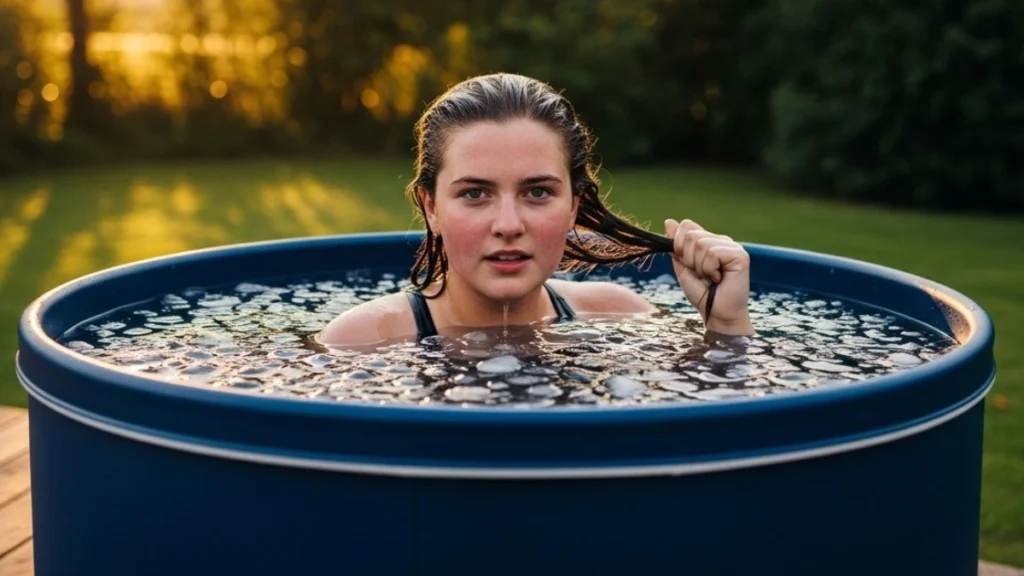
A clean ice bath isn’t just about aesthetics. It’s about supporting your body’s recovery environment with care and mindfulness.
When used properly, hydrogen peroxide becomes a quiet partner in your wellness routine — one that helps your water stay pure and your skin stay comfortable.
Let’s explore the deeper benefits of this simple addition.
A Cleaner, Fresher Experience
Ice bath water tends to get cloudy fast, especially after repeated dips. Hydrogen peroxide helps keep it clear by breaking down organic buildup from sweat, oils, and bacteria.
When your bath stays clean, your recovery feels lighter and more peaceful. There’s no lingering smell or film on the water’s surface, just a crisp, pure environment that mirrors the clarity you’re trying to cultivate internally.
That small detail makes a big difference when you’re using the same tub several times a week. Cleaner water means less frequent draining and fewer harsh chemicals down the drain.
Supports Hygiene Between Uses
If you reuse your ice bath water for two or three sessions, peroxide offers peace of mind. It limits bacterial growth naturally without introducing synthetic additives.
Hydrogen peroxide gently oxygenates the water, creating a less hospitable environment for microbes. This keeps your bath safer and more sustainable, especially when practicing cold therapy regularly.
I often tell clients: consistency and cleanliness go hand in hand. Your body deserves recovery water that’s as fresh as your effort.
Gentle on Skin When Used Correctly
Unlike chlorine or bleach, hydrogen peroxide leaves no harsh residue. When properly diluted, it’s unlikely to cause irritation.
For most people, 3% hydrogen peroxide in small doses feels neutral on the skin, neither drying nor sensitizing. Combined with a short soak and post-bath moisturizer, it keeps the experience refreshing instead of abrasive.
Of course, if you have very sensitive skin or eczema, start with less and monitor closely. Your body will always tell you what it needs.
Enhances the Sense of Ritual
Cleanliness affects mindset. There’s something grounding about stepping into a bath that feels not only cold but pure. Hydrogen peroxide adds that quiet sense of assurance that the space you’re entering is safe, intentional, and cared for.
For many, that’s the difference between “just cooling down” and a mindful recovery practice. Every choice you make, even something as small as adding a cup of peroxide, becomes part of your holistic wellness rhythm.
Risks And Precautions To Keep In Mind
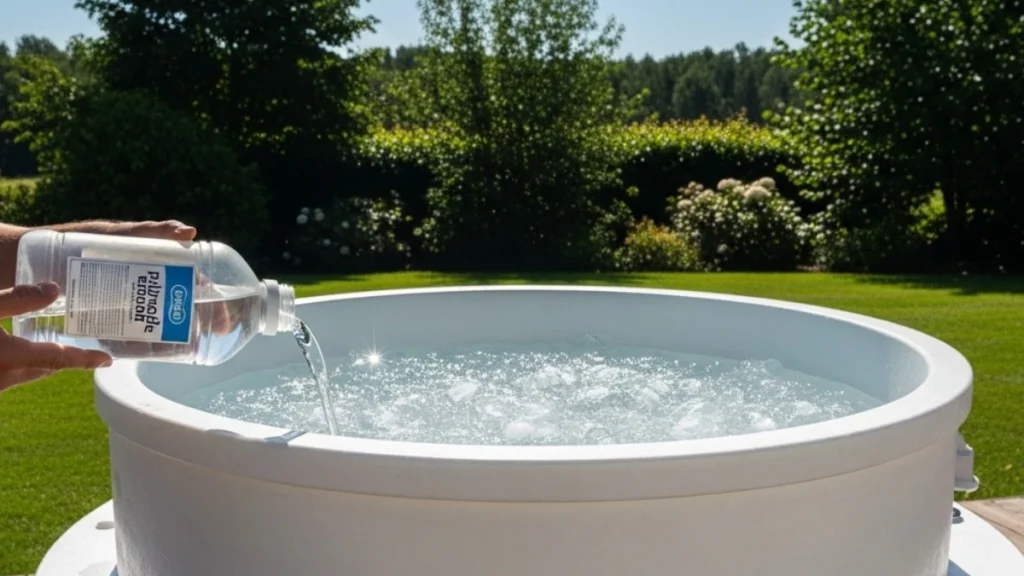
Even gentle remedies need awareness. Hydrogen peroxide is safe when used correctly but like any disinfectant, too much of a good thing can tip the balance.
Here’s what to keep in mind before making it a regular part of your cold therapy practice.
Skin Sensitivity and Irritation
Hydrogen peroxide can cause mild dryness or irritation if overused or left on the skin too long. People with sensitive skin or small cuts may feel stinging or redness afterward.
To prevent this, always use 3% peroxide, follow the correct ratio (1–2 cups per 80–100 gallons), and limit soak time to 10–15 minutes. If irritation appears, skip peroxide next time and rinse thoroughly after each bath.
Listening to your body ensures the practice stays healing rather than harsh.
Avoid Concentrated Solutions
Industrial-grade peroxide (6–30%) should never be used in an ice bath. These concentrations are meant for sterilizing surfaces or lab use, not skin contact.
Even small splashes can cause burns or irritation. Always check the label and stick with household 3% hydrogen peroxide, it’s the safe standard for personal wellness routines.
It might sound obvious, but it’s one of the most common mistakes people make when experimenting with home recovery setups.
Don’t Mix With Other Cleaning Agents
Hydrogen peroxide works best alone. When mixed with vinegar or essential oils, it can produce unpredictable chemical reactions or reduce its effectiveness.
If you prefer fragrance or natural scents, wait until after your peroxide has neutralized in the water, or use them in your post-bath routine instead. This simple separation keeps your water safe and your results consistent.
Signs You’re Using Too Much
Wondering if your ratio is off? Here’s how to tell.
- The water smells sharp or “metallic”
- Your skin feels tight, itchy, or red afterward
- You notice film or bubbling on the surface that doesn’t dissolve quickly
If that happens, dilute your next mix by half and shorten your soak time. Hydrogen peroxide should leave your skin refreshed, not sensitized.
Alternatives For Maintaining A Clean Ice Bath
Hydrogen peroxide isn’t the only way to keep your ice bath clean. Some people prefer even simpler, more natural methods, especially if they have very sensitive skin or prefer zero additives.
The goal is the same: to maintain clarity, reduce bacteria, and make every soak feel fresh.
Baking Soda for Gentle Odor Control
A classic household remedy, baking soda helps neutralize odor and balance pH. Add about ½ cup per 80 gallons of water for a gentle cleanse.
It’s mild enough for sensitive skin and safe for tubs, but it doesn’t have the same antibacterial strength as hydrogen peroxide. Still, it’s great for daily use if you rinse your tub often.
Some people combine baking soda with small amounts of peroxide for a more balanced mix, just avoid adding too much of either.
Vinegar as a Natural Cleaner (Used Separately)
White vinegar is another eco-friendly option, excellent for scrubbing your tub between uses, not for adding directly to your bath water with peroxide.
Use it for cleaning and rinsing when emptying your ice bath, as it removes film and mineral deposits. Always rinse thoroughly afterward before refilling the tub.
Think of vinegar as your between-sessions cleaner and peroxide as your active-use sanitizer. Each has a role, but they don’t mix well together.
Regular Water Changes and UV Sanitizers
Even with peroxide, no method replaces fresh water. Draining and refilling every 2–3 sessions is the most effective way to ensure safety.
If you use your ice bath frequently, consider a UV sterilizer or portable water pump system to minimize bacterial buildup naturally. These tools align with a minimalist, eco-conscious approach to wellness.
Clean water equals cleaner recovery, and cleaner recovery supports better healing.
Final Thoughts
Hydrogen peroxide might seem like a small addition, but it brings a quiet kind of assurance to your wellness and recovery practice. When used mindfully, it helps your ice bath stay as pure as the intention behind it—clear, fresh, and kind to your skin.
This isn’t about chasing perfection or over-sanitizing. It’s about honoring the simple connection between care and clarity.
Every time you prepare your bath, you’re creating a space of trust between your body and your routine. So the next time you pour that cool water, remember, recovery isn’t just physical. It’s an act of presence, patience, and mindful renewal.

